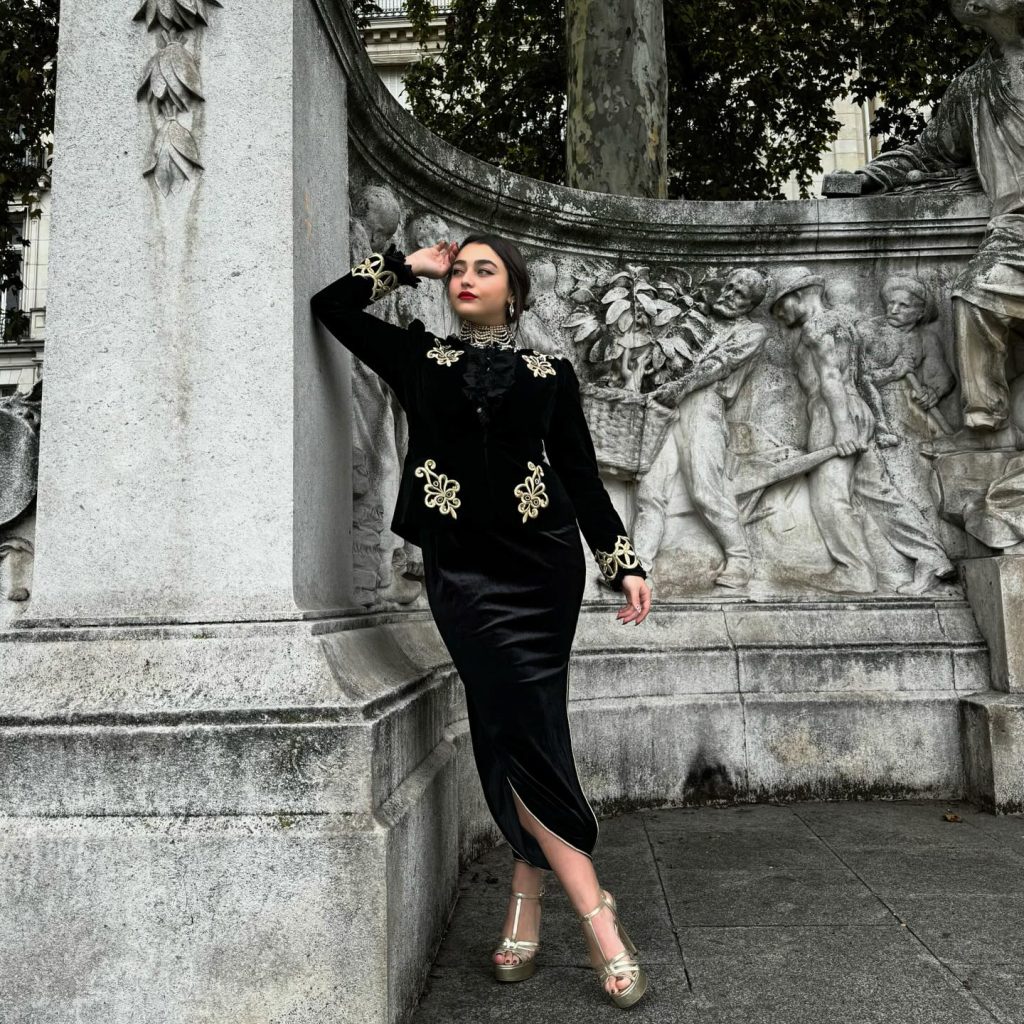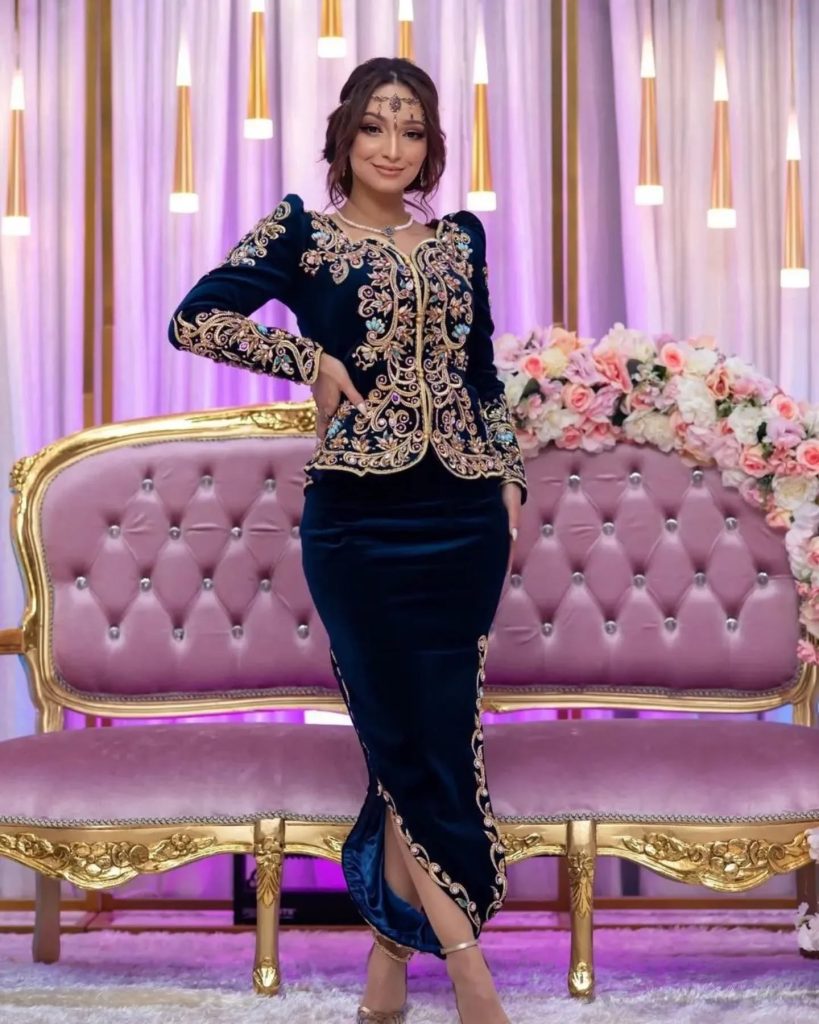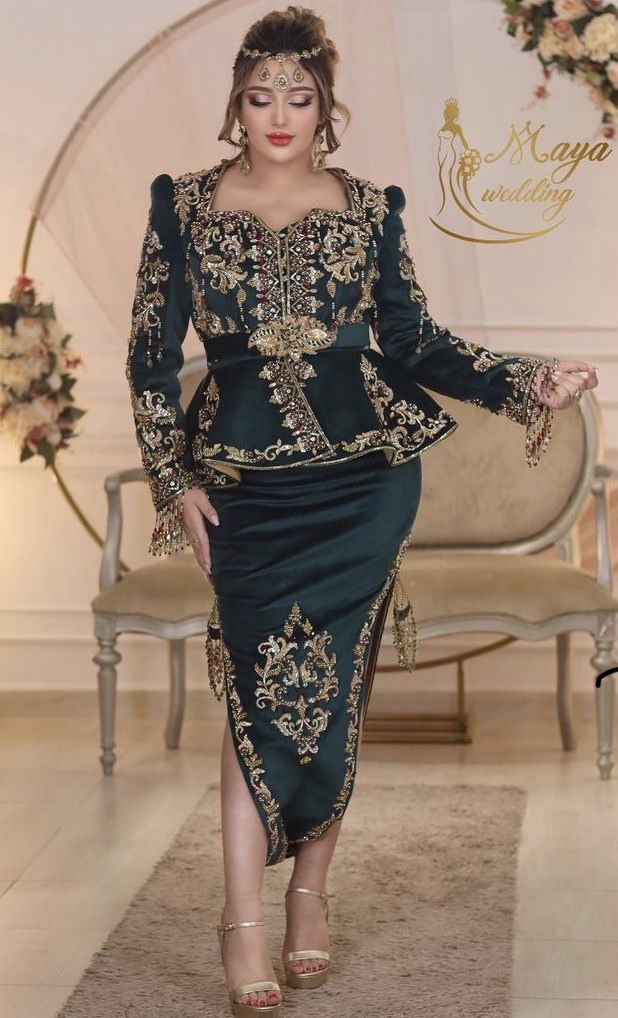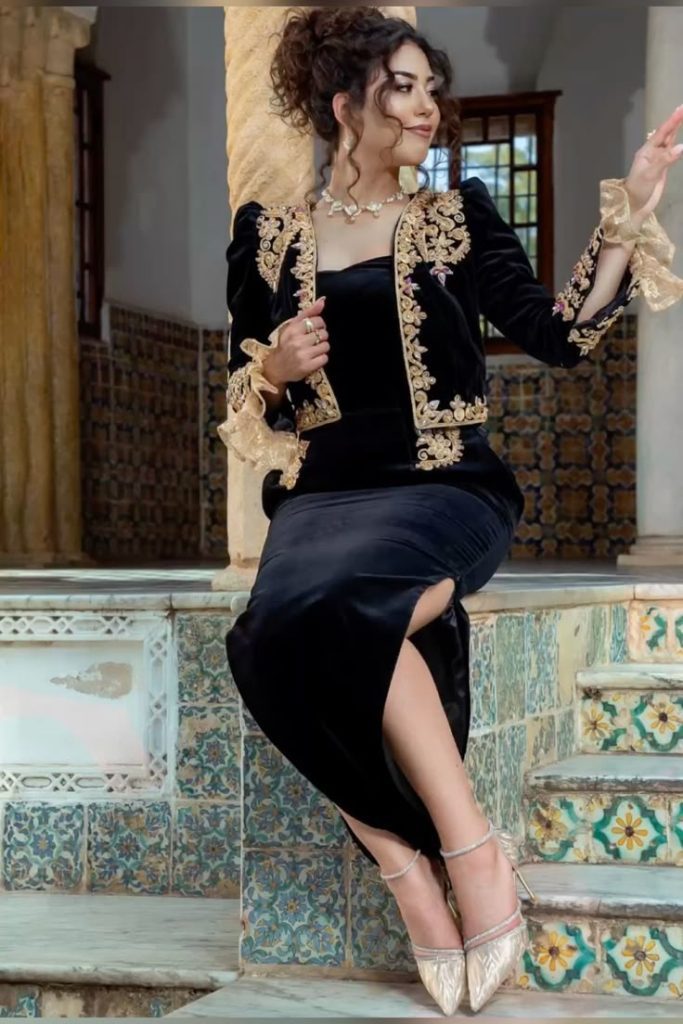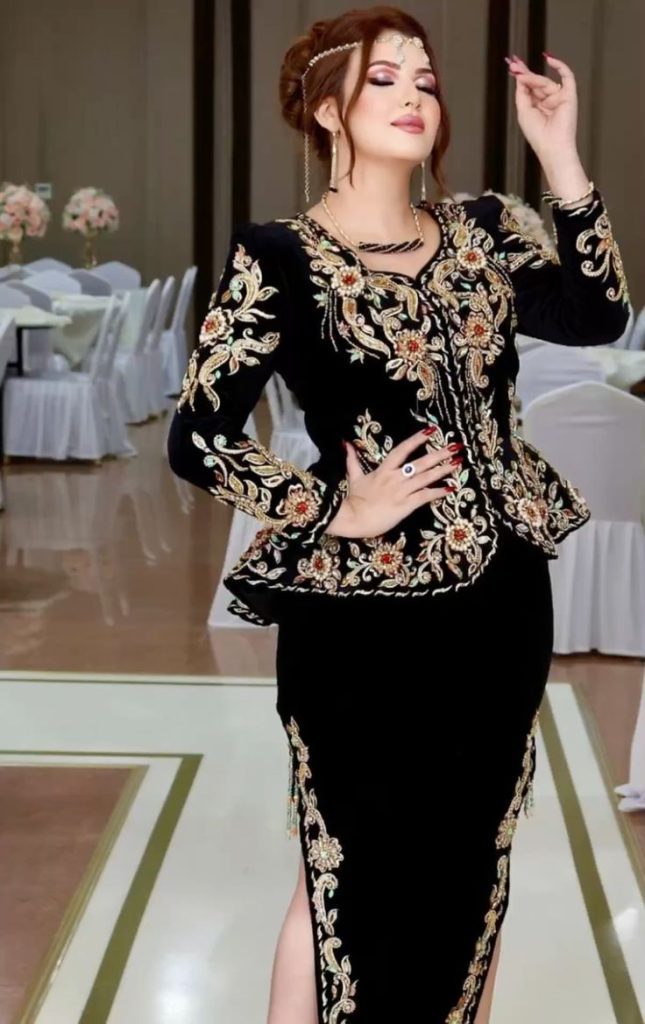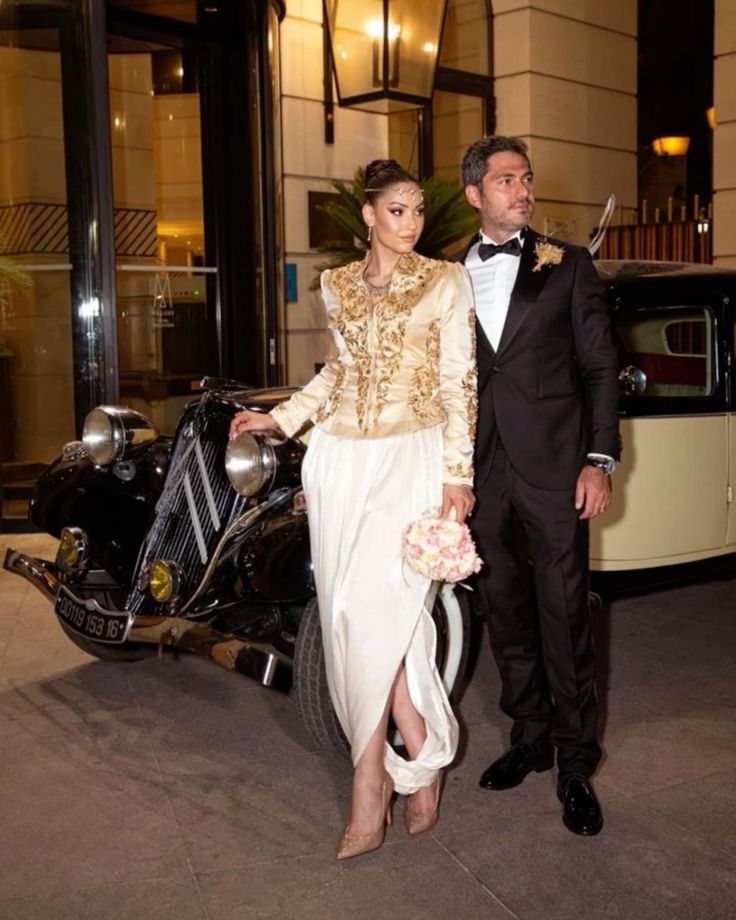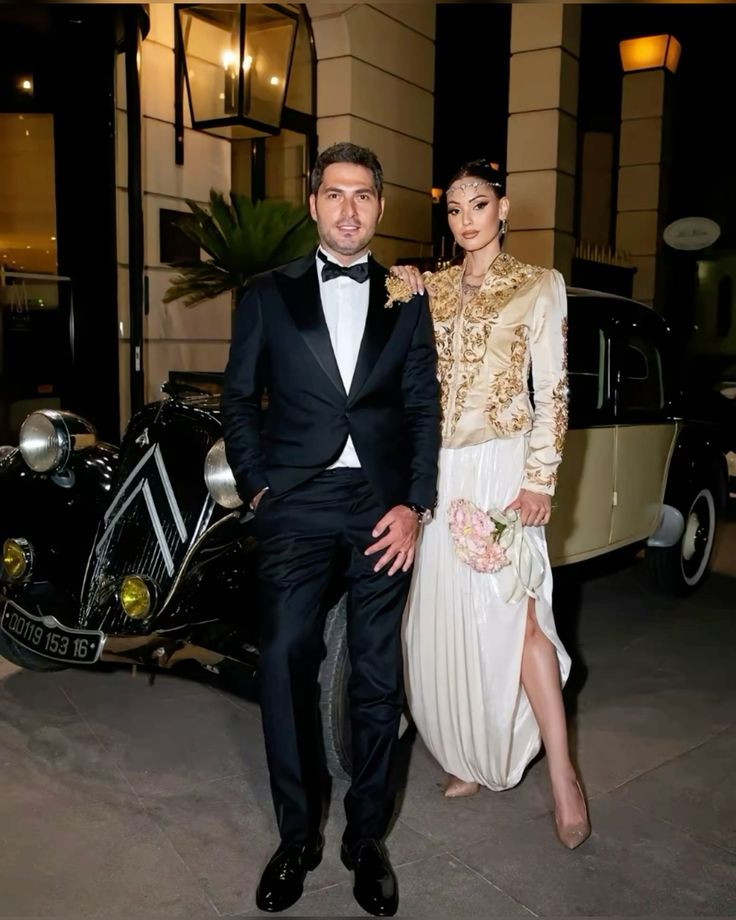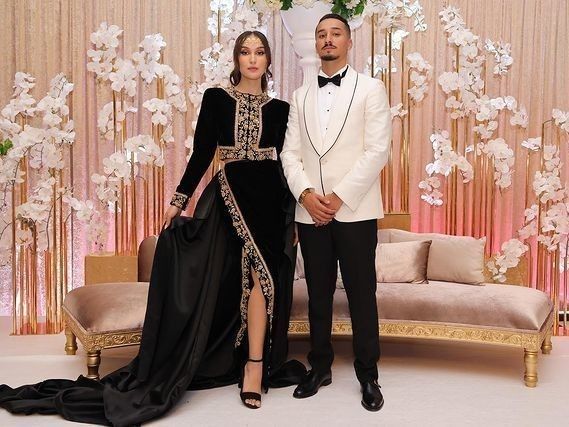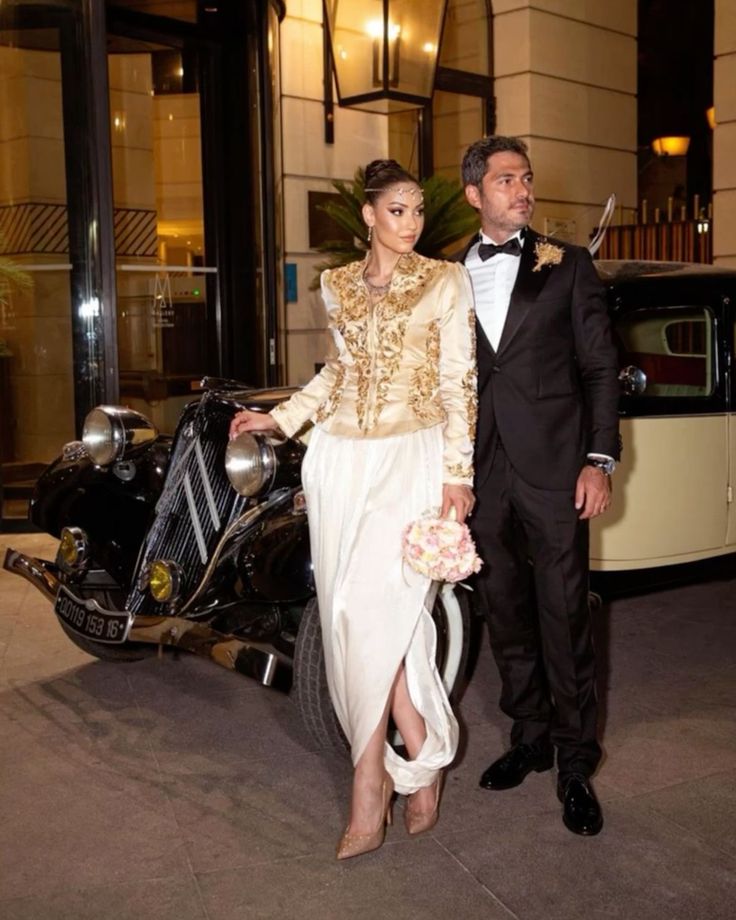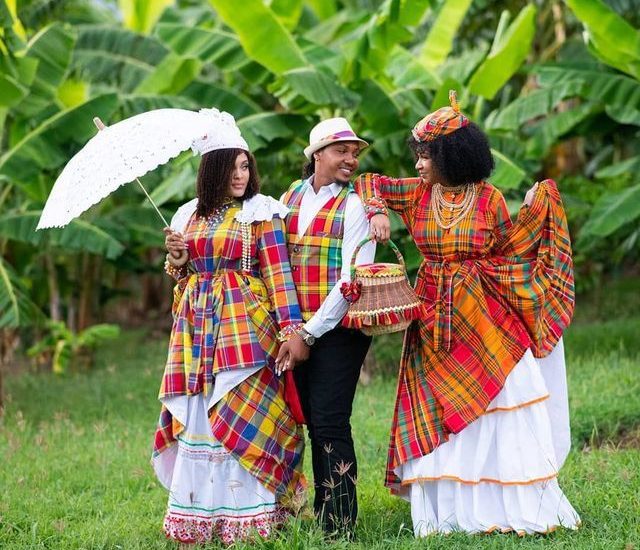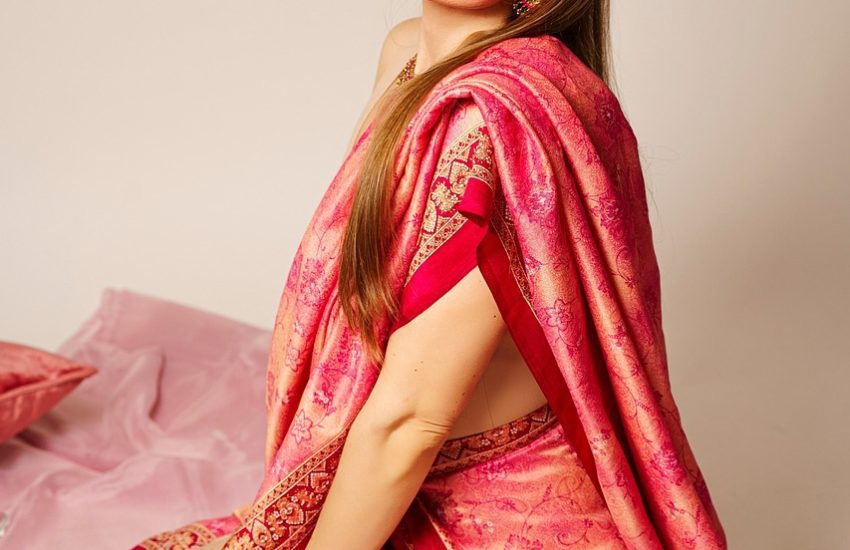Karakou Dress: The Pride of Algerian Culture
Have you ever seen a Karakou dress that truly reflects the rich history and vibrant spirit of an entire culture?
Welcome to the world of the Karakou, the glamorous and iconic traditional dress of Algeria.
Moreover, with its luxurious embroidery and bold silhouette, the Karakou is far more than just clothing — it’s a story woven in velvet and gold. This elegant garment captures the essence of Algerian identity, tradition, and pride.
Let’s take a closer look at the history, evolution, and cultural significance of this stunning ensemble.
1. History of the Karakou Dress
Historically, the Karakou emerged in the 19th century, right in the heart of Algiers, during the Ottoman era. Drawing on Berber-Andalusian heritage, it was developed as a ceremonial outfit and quickly stood out from simpler garments like the Ghlila, which was made from modest materials for everyday wear.
At the core of the Karakou is its tailored velvet jacket, lavishly embroidered with gold thread using traditional techniques such as “Majboud” and “Fetla.” This intricate hand embroidery is what gives the Karakou its majestic look.

The lower part of the outfit typically includes:
- “Seroual Chelka” – straight-leg pants, split at the sides and stitched at the bottom
- Or the “Seroual Mdouer” – voluminous bouffant trousers that add flair and elegance
By the 17th century, the outfit’s style evolved — skirts reached the calf, belts were added, and sleeves became more dramatic. In the 19th century, the jacket took on a shorter, tighter form, fastening with a single button at the chest. A winter version, complete with sleeves, was introduced to adapt to the seasons.
Once reserved for the Algerian aristocracy, dignitaries, and the bourgeoisie, the Karakou was traditionally made of rich velvet and silk. Over time, thanks to more accessible fabrics, it became available to the middle class. Today, it remains a symbol of sophistication, especially among Algerian women who cherish both style and tradition.
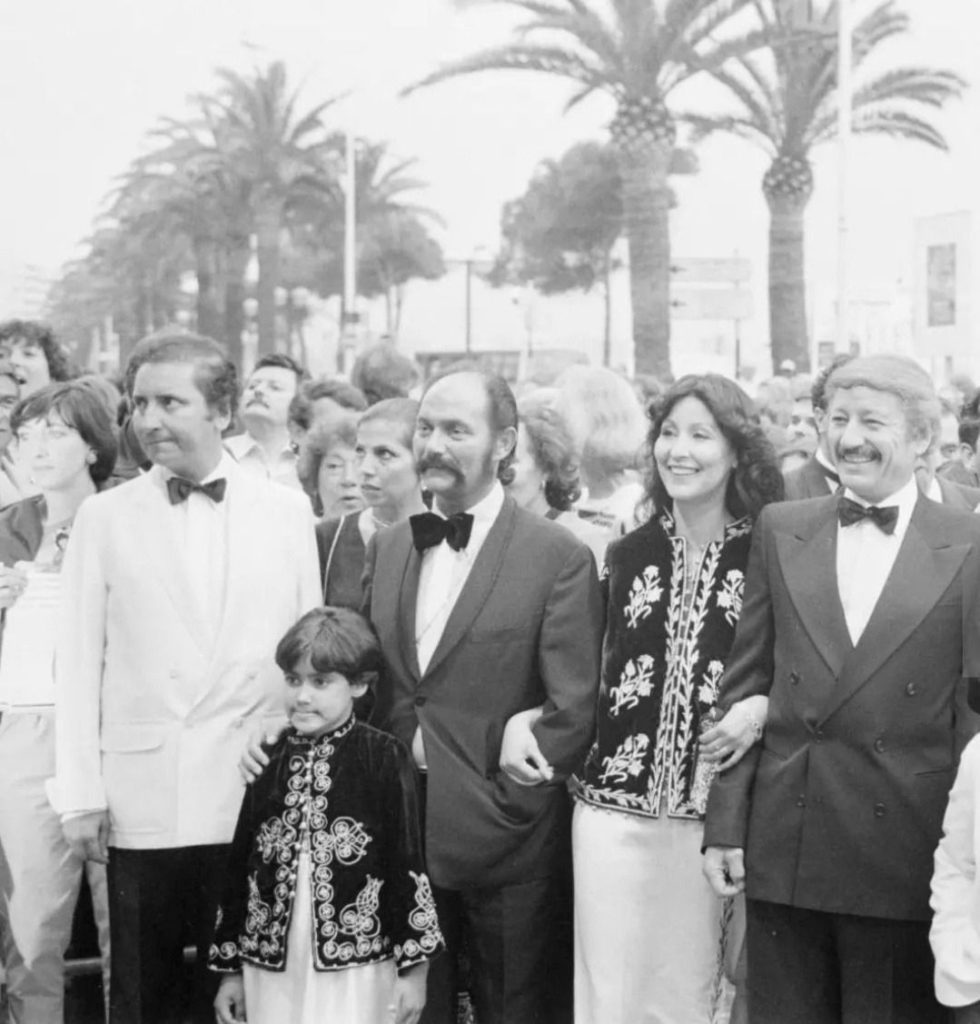
2. How the Karakou Dress Became a Fashion Icon
Though it originated in Algiers, the Karakou’s beauty soon captivated women across Algeria. Cities like Annaba, Bejaia, Blida, Constantine, Miliana, Batna, and Oran embraced this timeless design, each adding its local flair.
In southern Algeria, the Karakou became an essential part of bridal fashion and wedding ceremonies, passed down through generations as a cherished heirloom.
Even the world of global fashion couldn’t resist its charm. Designers like Yves Saint Laurent, Valentino, Dolce & Gabbana, and Elie Saab have all drawn inspiration from the Karakou’s intricate patterns and regal aura.
Today, the Karakou blends traditional beauty with modern elegance, making it a standout piece on both runways and wedding aisles. It’s a garment that continues to inspire, evolve, and celebrate the timeless elegance of Algerian heritage.
Many people now use the word “Karakou” to refer to the jacket. Algerian women often wear it with modern pants or skirts, mixing old and new styles. The gold embroidery is sometimes adorned with pearls or crystals, adding an extra shine. The patterns often reflect the beauty of ancient Berber-Muslim dynasties, keeping the Karakou both elegant and meaningful.
3. Accessories That Complete a Traditional Karakou Dress
M’hermet el Ftoul: Enhancing the Elegance of Esteemed Algerian Women
The M’herma is a luxurious scarf, traditionally made from silk, mansoudj, or satin. Carefully hand-embroidered, it features an elegant version known as M’hermet el Ftoul, which is easy to recognise by its distinctive dangling threads.
These threads weren’t always machine-made. In earlier times, women crafted them by hand, rolling each thread between their fingers in a process called “Yeteftel.” This unique technique gave the scarf its name: M’hermet el Fetla or el Ftoul.
Notably, the length of the threads once indicated the value of the scarf — the longer the threads, the more prized the M’herma.
Traditionally, Algerian women styled the M’herma with the Kouiyet and the Karakou. While this beautiful tradition is less common today, brides still embrace it during the El Henna ceremony, adding a touch of elegance and heritage to their look.
To honour this custom, we encourage guests who wear a Karakou to pair it with a M’hermet el Ftoul — a timeless gesture that celebrates Algerian style and identity.
Additional Information About the M’herma
- The M’herma’s dangling threads are believed to symbolise fertility and abundance.
- It’s Intricate embroidery often features floral motifs and geometric patterns, reflecting the rich artistry of Algerian craftsmanship.
- The M’herma’s colour and style can vary depending on the region and personal preferences.
- The M’herma is not just an accessory, but it’s the Pride of Algerian Culture, a symbol of cultural identity and heritage for Algerian women.
